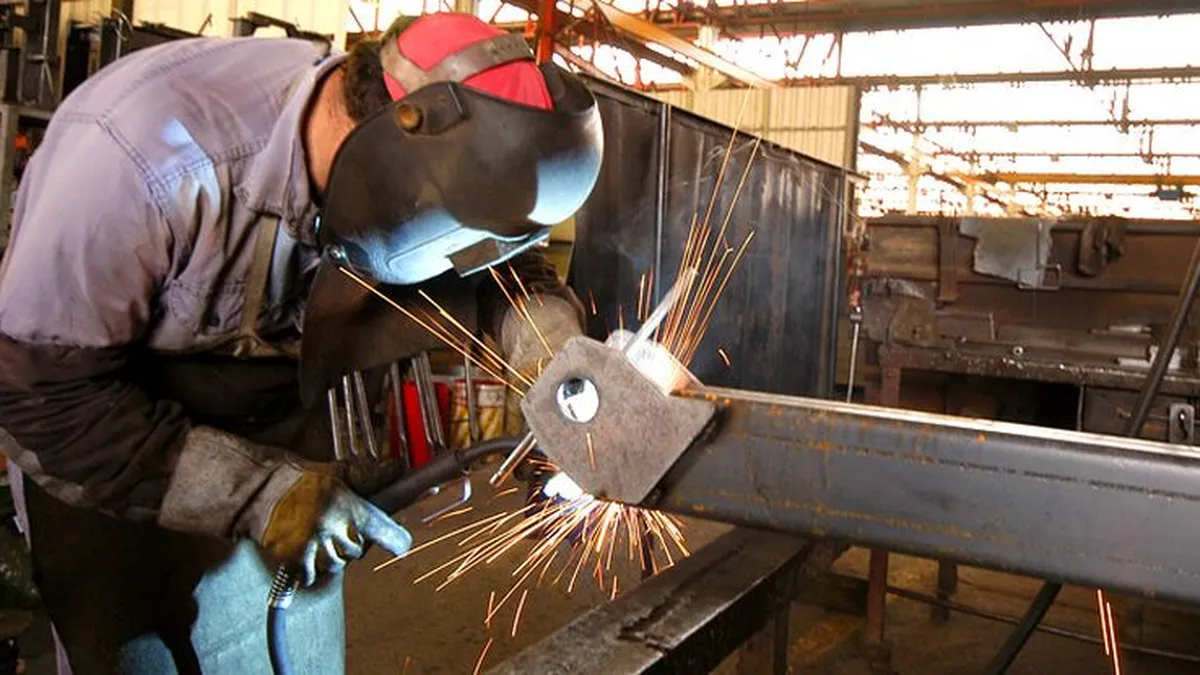According to him Industrial Production Index (IPI) prepared by FAITHFULindustrial activity during the past month fell 1.2% in the DESESTATIONALIZED MEASUREMENT AGAINST MAYwhile in the quarterly comparison fell 0.8% against the first quarter of 2025. For his part, the director of the consultant Orlando Ferreres & Associates, Fausto Spotornohe advanced to this medium that “The numbers of recent months indicated that (industrial activity) was slowing down“
In this sense, the last report of the IPA Observatory (Argentine SME Industrialists)he said that growth in interannual comparison “It is more explained by the statistical effect of the deep contraction of 2024 than for a structural change“
In addition, he explained that the most dynamic sectors, such as vehicles, furniture and machinery, “They rebound, but with low capillarity towards the whole industrywhile intensive branches such as clothing and metallurgy remain in decline. “
“The real economy, which is what we live daily, industrialists, is suffering a deeper crisis of the imagined. Only in a few months it can be reflected in the statistics and, that time, for some factories it will be late, ”said the IPA headline, Daniel Rosato.
The problems forward
For the second half of the year, The panorama is not promising. “Business expectations confirm it: more than 70 % of industrialists do not expect improvements in the short term. This panorama suggests that the industrial cycle could be reaching a technical roof, Without sustained internal impulse or a clear reindustrialization strategy“The IPA Observatory warned.
In line, faithful recognized that “the sustainability of recovery shows a deterioration and, towards the months to come, In several sectors the positive comparison base effect was exhausted“
The president of the Association of National Entrepreneurs and Entrepreneurs for Argentine Development (ENAC), Leo Bilanskihe said to Scope that “The common denominator in the industrial sector since it started (Javier) Milei is the dismissal “, a consequence that awarded him to “Impact of indiscriminate imports.”
He argued that for 2025 “there was a boom from business tours to China to buy products that began to arrive this first semester and that they will arrive in the second semester also brutally “. For that reason, “The industrial sector should have another quarter the next quarter and so on the end of the year.”
According to the last survey of the ENAC, he 19% of SMEs fired personnel in the second quarter of 2025, while that only 14.9% incorporated it. In addition, they found that Eight out of ten entrepreneurs will not hire workers in the third quarter of 2025.
SMEs industry
The SME industrialists questioned the lack of credits for the sector.
The rise in costs
The ENAC report also estimated that Costs increased 18.9% during the second quartercompared to the rise in inflation in that period that, according to INDEC, was 5.49%. “That increase in disproportionate costs, when you want to validate changing the price, you can’t because the consumer has no purchasing power and is not validating. Then you eat profitability to survive. For us it is the beginning of a recession, “Bilenski lamented.
For his part, the general secretary of the Chamber of Small and Medium Metallurgical Industry (Camima), Jose Luis Ammaturohe explained to this medium that The activity level is “2% above last year”. However, he clarified that performance is heterogeneous. “The metallurgical sectors that are linked to the energy, oil, mining, food and agribusiness are better. Those who are linked to the foundry, textiles or the domestic market are more complicated, “he said.
In addition, he explained that there are companies from some sectors “that are beginning to have Some complications because their costs cannot compete against imported productsnot because they are not competitive, but because the cost structure in Argentina is different. ” “A massive import import, since the economy is not strongly improved”.
The impact of rates and lack of credit
The metallurgical businessman recognized the government that “the economy has normalized” and returned it “similar to that of other countries in the world.” However, he also mentioned that “In most countries in the world there are also credit lines that are accessible to the industry and also for the consumerwhich make the economy work. “
“It has been seen that the population consumption has turned more to durable goods, something that did not happen with high inflation: cars, motorcycles, bicycles, appliances. That is important. But that has not yet shed in more accessible credit for the industry “, argument.
In this sense, he mentioned the volatility of the rates during the last days: “We are interested to go down, because it will take many companies to focus more on investmentsnot to be so worried in the rate at a time when one is interested in increasing productivity, and the best way is to invest. And to invest a capital is needed that the ideal is that companies obtain it through credit. This credit today is very expensive“
In line, Fiel’s last report stated that for July there is a “Potential Impact on the demand for higher sustained interest rates to contain excess liquidity in the economy”.
For its part, Bielisnki considered that “credits are not released for small and medium enterprises”. He added: “They are more restricted than ever because banks to give you credit ask for flow. And if you are entering a recession, what flow are you going to have?”
He assured that in the current situation “What banks do is restrict credit and lend the Stateplace the silver in Caiós, in the LECAP or in the tools that the State gives it. It is much more administrable than to give money to small and medium enterprises“
Source: Ambito




